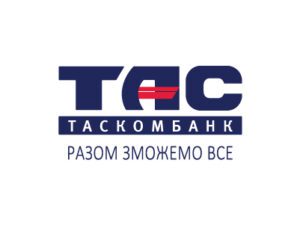
The total level of natural gas reserves in Ukrainian underground storage facilities (UGS) at the end of last week was 11.5 billion cubic meters (including 4.7 billion cubic meters of long-term storage gas), which is 2% lower than last year’s figure.
This was reported by former Energy Minister Olga Buslavets on her Facebook page.
“Daily gas consumption in Ukraine over the past week has fluctuated at 23-24 million cubic meters per day, which, according to AGSI (the European platform Agregated Gas Storage Inventory – IF-U), allows more than 50 million cubic meters per day to be pumped into UGS facilities,” she wrote.
This daily injection volume is possible thanks to the available gas import volumes, which, according to the Ukrainian Gas Transmission System Operator (OGTSU), have amounted to about 23-24 million cubic meters per day from Hungary, Poland, and Slovakia since the beginning of September (excluding short-haul transit).
In turn, as Buslavets noted, at the end of last week, natural gas reserves in European UGS facilities increased to 84.5 billion cubic meters with a fill rate of 79%, which is 7% below the average for the last five years and 16% below last year’s level, or 16 billion cubic meters.
As reported, the Ministry of Energy of Ukraine plans to accumulate 13.2 billion cubic meters (or 8.6 billion cubic meters without taking into account “buffer gas”) by November 1, 2025, which, according to former OGTSU head Serhiy Makogon, is too low and will require additional imports of 1.5 billion cubic meters in winter.

As of August 1, 2022, according to preliminary data, Ukraine’s international reserves amounted to $22.385 billion (in equivalent), which is 1.6% or $371.5 million less than at the beginning of July, the National Bank of Ukraine (NBU) said on Friday.
“They declined… given the National Bank’s interventions and payments on the state’s domestic foreign exchange obligations, which were largely offset by foreign currency borrowings in favor of the government,” the NBU said.
As reported, in June, the fall in reserves amounted to 9.3%, or $2.344 billion.
The regulator said that net international reserves last month fell by 2.9%, or $377 million, to $12.574 million, while in June they fell by 13.2%, or $1.97 billion.
The National Bank said that in July the pace of international reserves was affected by the sale of $2.117 billion by the NBU in the foreign exchange market, but at the same time, the purchase into reserves after the devaluation of the official rate on July 21 by 25% reached $922.0 million, which reduced the negative balance to $1.195 billion.
“From July 22 until the end of the month, a net supply of $40 million to $70 million per day was recorded daily on the interbank foreign exchange market,” the NBU said.
The NBU added that foreign currency receipts to the accounts of the government of Ukraine in the National Bank in July amounted to $1.563 billion, including $1.049 billion received from Germany, and $514.0 million from the placement of foreign currency domestic government bonds.
At the same time, the total volume of government payments for servicing and repaying public debt in foreign currency amounted to $677.0 million, including $630 million was sent to service and repay government bonds, and $47 million to settlements with other creditors.
“The current volume of international reserves provides for 3.5 months of Current External Payments (CXP), which is enough to meet the obligations of Ukraine and the current operations of the government and the National Bank,” the NBU said.
As reported, at the beginning of 2022, Ukraine’s international reserves amounted to $30.941 billion, net international reserves (NIR) were $20.767 billion.

Shareholders of TAScombank (Kyiv) at a general meeting on June 14 will consider approving profit for 2021 in the amount of UAH 456.062 million and directing 44%, or UAH 200 million, to the formation of reserves.
According to the bank’s announcement in the information disclosure system of the National Securities and Stock Markets Commission, the remaining profit of UHA 256 million is planned to be left undistributed.
The bank also plans to refuse to pay dividends to shareholders based on last year’s results.
As reported, in 2020, the bank’s net profit amounted to UAH 381.112 million.
According to the NBU, at the beginning of 2021, the main owner of TAScombank was Sergiy Tigipko (99.93% of shares).
According to the NBU, as of March 1, 2022, TAScombank ranked 16th (UAH 30.632 billion) in terms of total assets among 69 banks operating in the country.

Ukraine’s international reserves as of July 1, 2021, according to preliminary data, amounted to $28.358 billion (in equivalent), which is 2% more than at the beginning of May this year ($27.84 billion), according to the data of the National Bank of Ukraine (NBU).
“As of July 1, Ukraine’s international reserves, according to preliminary data, amounted to $28.358 billion (in equivalent). In June, they grew by 2% due to foreign exchange charges in favor of the government and NBU interventions, which compensated for the repayment of external and internal obligations of the state,” the report says.
As the National Bank notes, the dynamics of reserves in June was affected by operations on government debt management – the total volume of payments for servicing and repaying government and government-guaranteed debt in foreign currency amounted to $995.6 million (in equivalent).
It is specified that $848 million was spent on servicing and redeeming government domestic loan bonds, $80.1 million – on servicing eurobonds, and the rest – on fulfilling other government obligations in foreign currency.
At the same time, foreign exchange earnings in favor of the government amounted to $1.095 billion (in equivalent), including $726.3 million from the placement of government bonds.
The press service noted that in May, the NBU and the government sent $2.3 million to the IMF.
It is indicated that the dynamics of reserves was also influenced by the operations of the NBU in the interbank market. In particular, the NBU replenished its reserves by $682.8 million due to the fact that for most of the month the supply of foreign exchange on the interbank market prevailed over demand, including due to the growing interest of non-residents in government bonds and the activation of exporters.
In addition, on some days, the regulator smoothed out excessive fluctuations of the hryvnia by selling foreign currency, selling $99.5 million per month.
According to the report, the dynamics of the indicator in June was also influenced by the revaluation of financial instruments – last month their value decreased by $180.8 million in equivalent, according to the National Bank.
As the regulator noted, as of July 1, 2021, the volume of international reserves covers 4.3 months of future imports. It is clarified that this is enough to fulfill the obligations of Ukraine and the current operations of the government and the NBU.
In addition, the NBU clarified that Ukraine’s net international reserves in June increased by $623 million, or 3.6%, to $17.977 billion.

Natural gas reserves in underground storage facilities (UGS) of Ukraine as of October 17, 2020 reached 28.434 billion cubic meters, or 91.9% of their total design capacity, according to operational data of JSC Ukrtransgaz.
According to the calculations of Interfax-Ukraine, on October 1 through October 17, the storage facilities were filled by 379.6 million cubic meters, and if during October 1 – October 16, the daily injection ranged from 19.6 million cubic meters to 28.2 million cubic meters, then on October 17, it decreased to 10.8 million cubic meters.
Since the end of the season for withdrawing gas from storage facilities on March 26 until October 17, 2020, reserves in Ukrainian UGS facilities have increased by 80.1%, or 12.649 billion cubic meters.
As reported, in the previous heating season, which lasted from November 1, 2019 to March 26, 2020, gas reserves in the country’s underground storage facilities decreased by 6 billion cubic meters (from 21.784 billion cubic meters to 15.784 billion cubic meters).
The system of 12 underground storage facilities of Ukrtransgaz, which fully belongs to NJSC Naftogaz Ukrainy, has a total design capacity of 31 billion cubic meters.

Ukraine’s FX reserves in April 2020 tentatively grew by 3.1% or $800 million, to $25.695 billion, the National Bank of Ukraine (NBU) said on its website on Thursday.
“Transactions of the National Bank to manage reserves and transactions on the FX market first of all contributed to the increase in FX reserves,” the central bank said.